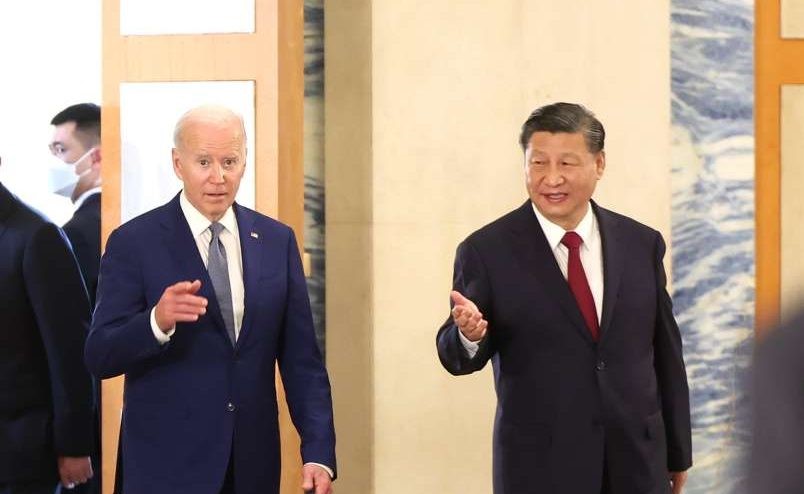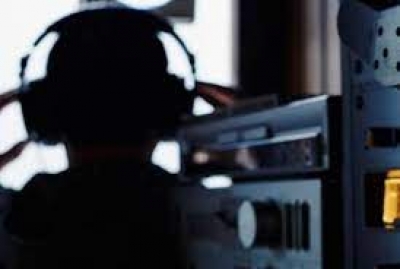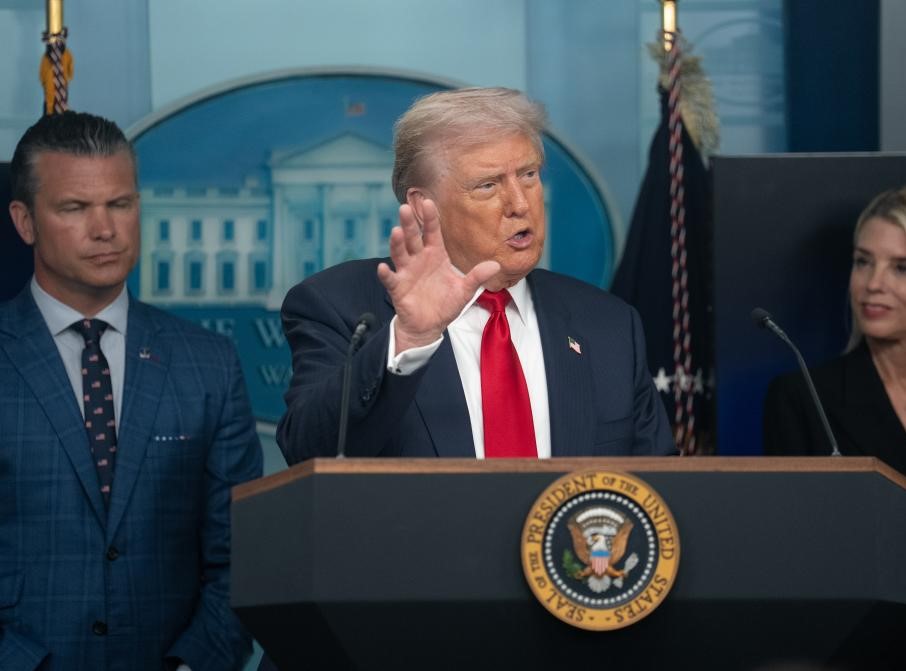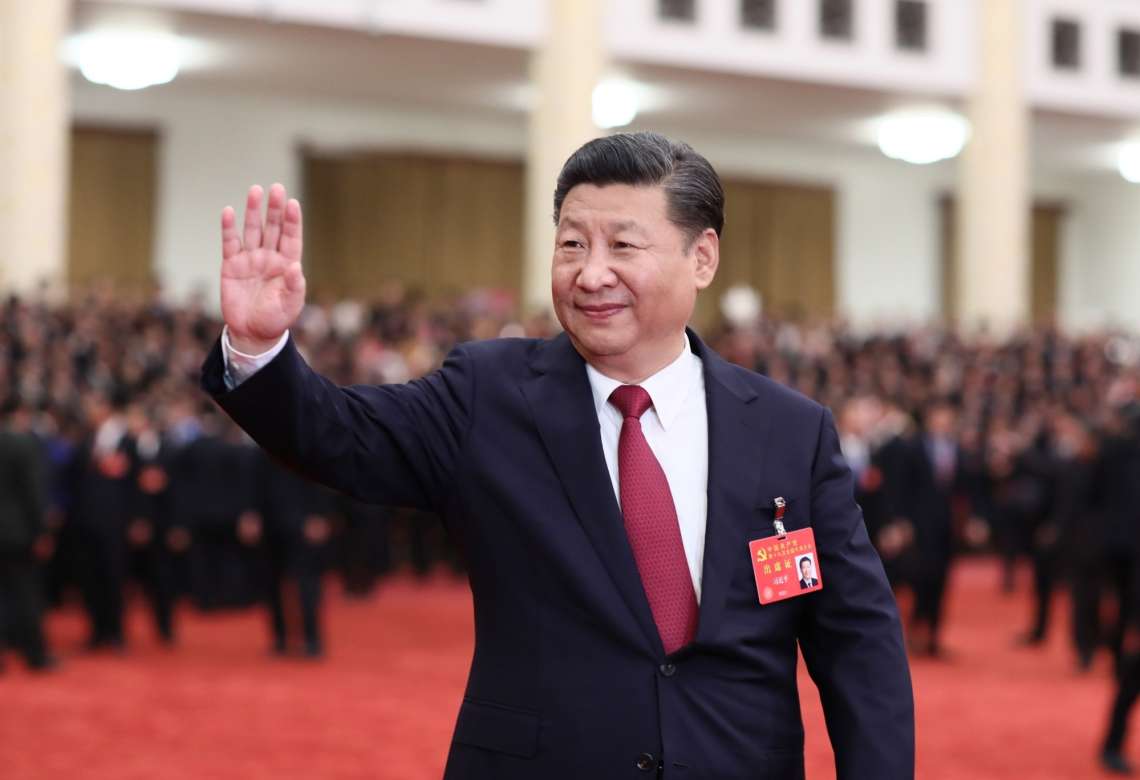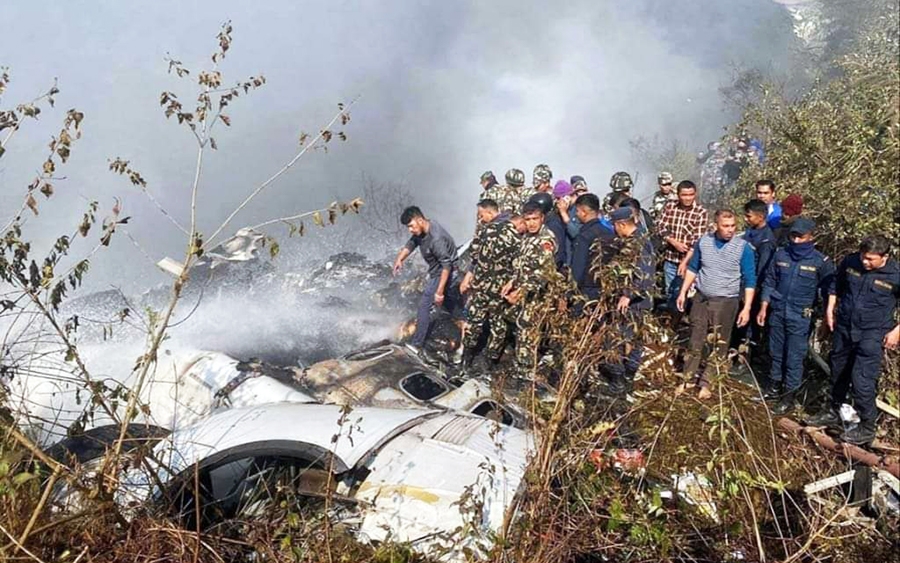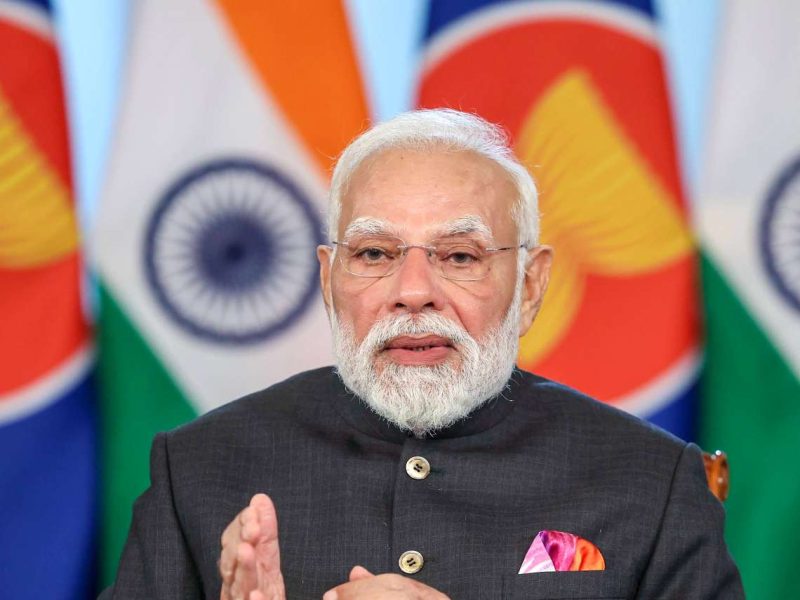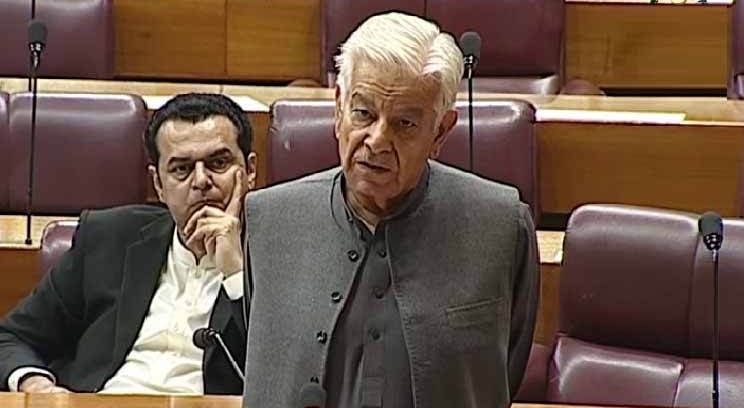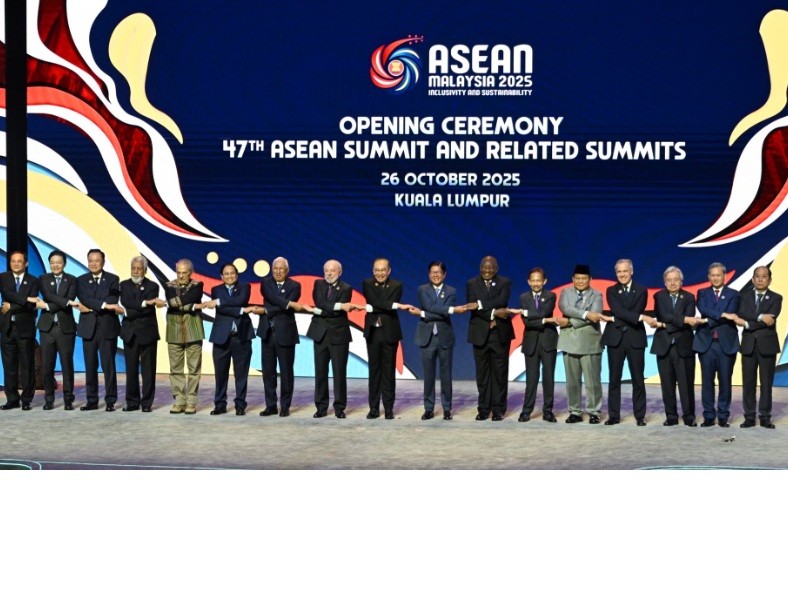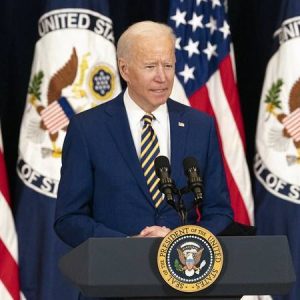Diplomatic relations have been harmed. A reset, slowly picking up momentum since last November, has been derailed. Secretary of State Antony Blinken canceled his visit to China, and it is difficult to see it being rescheduled anytime soon….reports Asia Lite News
It is ironic that a balloon has so severely deflated relations between China and the USA. The American shoot-down of that high-altitude balloon on 5 February represents a hammer blow in bilateral relations, but the blame rests solidly in China’s corner.
An F-22A fighter of the US Air Force’s 1st Fighter Wing, taking off from Langley Air Force Base, splashed the high-flying balloon with an AIM-9X Sidewinder missile after it had crossed the coast of South Carolina. The balloon was flying at between 60,000 and 65,000 feet. This whole episode of this surveillance balloon that overflew the continental USA has raised important questions about nefarious activities of the People’s Liberation Army (PLA), the risk calculus of Chairman Xi Jinping, communication levels between the PLA and China’s Ministry of Foreign Affairs (MFA), and just why China is floating sensor-equipped balloons all around the world’s atmosphere.
Firstly, was it a Chinese balloon? There is no question, for China itself admitted its ownership. Secondly, what kind of balloon was it? China’s MFA stated “the balloon in question is a Chinese unmanned civilian airship used mainly for meteorological research purposes”.
One wonders why it is only “mainly” for meteorological purposes, and not fully. Naturally, China rolled out puppets such as Hu Xijin, former Global Times tabloid editor, to reinforce its stance. Hu argued: “Stratospheric airship is a new technology. It should be an airship tested by a Chinese private company, but it got out of control. Flying over the US is clearly not within its design. It is round, not boat-shaped, indicating that its mission does not include long-distance flying.”
The MFA also stated: “China will resolutely safeguard the legitimate rights and interests of relevant companies, while reserving the right to make further necessary reactions.” That China will not even reveal the name of the “relevant companies” tells the world everything it needs to know.

The most likely source of the high-altitude surveillance balloons is the Special Vehicle Research Institute (SVI), a subsidiary of the Aviation Industry Corporation of China (AVIC) that is based in Jingmen, Hubei Province, according to ANI.
In its catalog, SVI (also known as No. 605 Research Institute) offers a range of remote- controlled airships, manned blimps, beyond-visual-range airships and aerostats suitable for various missions. In fact, SVI performed its first demonstration of a stratospheric airship back in 1995, and it advertises airships for both surveillance and communication relay.
China has invested heavily in the aerostat market, with an aerostat essentially a lighter-than-air balloon that is tethered to the ground so it can perform persistent public security and surveillance when fitted with communication equipment, infrared cameras and synthetic aperture radar. For example, at the Zhuhai Air Show in China in November 2014, ANI witnessed the first Chinese aerostats displayed by two state-owned companies: AVIC and the East China Research Institute of Electronic Engineering (ECRIEE), which is a division of the state-owned China Electronics Technology Corporation (CETC).
ECRIEE’s aerostats range in size from 120m3 to 8,000m3, and they were used at such events as the 2008 Beijing Olympic Games. China Aerospace Science and Industry Corporation (CASIC) is another entity investing in airships. It is therefore likely that the recently downed high-altitude balloon came from an entity like AVIC, ECRIEE or CASIC. All these defense-related conglomerates fall under the State-owned Assets Supervision and Administration Commission of the State Council. They are most definitely not private companies.
So this represents another black mark against China’s desperate explanations. It is unable to name which private company made this balloon, thus unwittingly confirming it came from a state-owned corporation.
Incidentally, Western countries may have unintendedly helped China with its balloon program. For example, New Zealand allowed Chinese companies Shanghai Pengxin and KuangChi Science to test a near-space balloon on 6 June 2015. Flying from a farm near Ashburton, the 40m-diameter balloon soared high into the sky.
Even more bizarrely, Zhuang Guota, head of the China Meteorological Administration, was fired because of this international incident. This was a cynical move by Chairman Xi Jinping, clearly designed to deflect blame onto a scapegoat. After all, if the balloon were from a private company, as some argued, why would this civil servant be fired?
As the Pentagon rightly stated, “We spoke directly with Chinese officials through multiple channels, but rather than address their intrusion into our airspace, the PRC put out an explanation that lacked any credibility.”
All this flapping around in China indicates that the communist hierarchy was caught red- handed. Thirdly, why was the balloon flying over the USA, especially where sensitive military nuclear sites are located in places like Montana? China’s MFA said the object “made an unintended entry into US airspace due to force majeure, namely the westerlies and the airship’s limited self-steering capability”.

The balloon, about the size of three school buses, entered the Alaska Joint Operating Area, north of the Aleutian Islands, on 28 January. It appeared in Canadian airspace on 30 January, and then re-entered US airspace over northern Idaho the following day.
Yet the balloon was not a mere victim of nature, for the USA observed a surprising degree of maneuverability. The duration of its stay over the USA was also significant. The truth is, the sheer size and altitude of this balloon would make it unsuitable for meteorological purposes.
Nor was this an isolated incident to be blamed on force majeure. Such balloons transited the USA at least three times under former President Donald Trump’s watch, but none for the sheer duration of this latest one.
In fact, identical balloons have shown up over multiple continents so far. One crashed into the Pacific off Hawaii four months ago, and another has allegedly overflown Guam. One balloon flew over India’s Andaman and Nicobar Islands in January 2020, another was spotted over Hachinohe City, Japan on 17 June 2020, and over Miyagi Prefecture on 3 September 2021. Currently, another Chinese balloon is transiting over Central and South America.
As the Pentagon noted, “These balloons are all part of a PRC fleet of balloons developed to conduct surveillance operations, which have also violated the sovereignty of other countries. These kinds of activities are often undertaken at the direction of the PLA.” The Pentagon pointed out that five Chinese balloons are known to have circumnavigated the globe, conducting some 20-30 missions over the past decade. Admittedly, though, it can be difficult to predict where a high-altitude balloon will go exactly.
In other words, this balloon over North America fits a pattern of Chinese behavior that goes back years.
It is undeniable that these are surveillance balloons. These flights are obviously purposeful, and the logical explanation is that the PLA has been running a deliberate program of surveillance inside foreign nations’ airspace for some years. This revelation may be mortifying for China’s MFA. You see, China likes to spit vitriol against the USA for what it sees as obtrusive military surveillance near its own borders.
There is no disputing that the USA conducts intensive reconnaissance operations against China, whether by satellite or aircraft near China’s coast. Yet, Chinese government protests about the USA have been popped all in one go. The USA abides by international conventions and does not transgress into Chinese airspace, which is something this Chinese-owned balloon blatantly did. What China is doing is far more egregious, as it transgresses international law. China has overstepped the mark and greatly escalated the situation with its actions, doing something that not even the USA would do.
Fourthly, what would China learn from this balloon operation over the USA? This is one of the most vexing questions, since it is questionable whether image intelligence picked up by this balloon would be of any better quality than a satellite in low-Earth orbit. There might some advantages for a balloon. Camera resolution from 20-40km should be better than from a satellite 200+km up. Balloons also have greater persistence, since satellites are orbiting and thus only conduct regular passes. Unless a balloon has been tracked, it is more difficult to know when it will be overhead, and this may give an element of surprise. This balloon had solar panels, so it was obviously designed for long-endurance flight. There is presumably satellite communication so that data can be transmitted back to Chinese ground control stations.
Yet there are questions. A balloon can carry a payload of only a few thousand pounds, whereas a satellite can carry tons, including large camera lenses and the ability to rapidly transmit encrypted data. Or was the device collecting signals intelligence? Yet such radio-frequency transmissions could probably be just as easily obtained by satellite. One cannot jump to premature conclusions, for there is not yet any specific knowledge of what payloads were aboard the balloon. That will change, however, as the USA recovers wreckage from a 7-mile debris field in the Atlantic Ocean. Its remains are in water just 47 feet deep, which will make recovery straightforward.
A senior American defense official would only say that the US believed the balloon had “a broad array of capabilities. We’re going to learn more as we scoop up the debris.” Furthermore, the balloon’s overflight “was of intelligence value” to the USA. “I can’t go into more detail, but we were able to study and scrutinize the balloon and its equipment, which has been valuable.” Thus, it was necessary to pop the balloon in order to neutralize any Chinese intelligence collected, as well as to enable the USA to recover any sensitive Chinese equipment.
Given all the foregoing, this was likely a probing effort as much as a spying effort by China. It could even form part of its psychological pressure on others, where Beijing feels it has the upper hand in coercing others. Indeed, China did not use shaping to reduce the balloon’s radar cross-section, and instead it seems to have relied on others opting not to shoot it down. Doctor Euan Graham, a senior fellow supporting the Shangri-La Dialogue, also assessed “the intelligence risk to be comparatively low”. But for him, “The bigger consequence, in my opinion, is the mounting outrage the overflight brought. Big win for US China hawks overall. Likely to be seen as a watershed in public opinion.” The US government has been acutely aware of the growing strategic threat being posed by China. Yet there is a gap between what Washington DC is saying, and how the American public perceives it. This has led to a more concerted campaign by officials to inform the people.
In this regard, the simple balloon saga has been a godsend, since it has gone a long way to waking up the American public. This episode has been very visible, very public, and is like a slap in the face that shows a more menacing China. Where US governments failed, Beijing was able to achieve in one fell swoop! This balloon news was on all the front pages and garnered huge attention. Whether this is just momentary, or there will be greater political support for American policy against China remains to be seen. However, it could turn out to be a pivotal movement in public thinking. In some senses, China put up a trial balloon, and it turned out to be a blunder. It is presumed that Xi authorized such overflights and intelligence collection of the USA and other countries several years ago. But now that decision may be backfiring. Perhaps his advisors and the PLA did not appreciate the risks of such violations of others’ sovereign territory, and wrongly briefed Xi that there would be no blowback.
The fact that President Joe Biden’s administration so publicly highlighted the presence of the balloon, and then shot it down as soon as it was safe to do so, is noteworthy. Trump, for all his denials, did not do so during earlier incursions. US Defense Secretary Lloyd Austin commented: “Today’s deliberate and lawful action demonstrates that President Biden and his national security team will always put the safety and security of the American people first while responding effectively to the PRC’s unacceptable violation of our sovereignty.”
Diplomatic relations have been harmed. A reset, slowly picking up momentum since last November, has been derailed. Secretary of State Antony Blinken canceled his visit to China, and it is difficult to see it being rescheduled anytime soon. Senior Colonel Tan Kefe, China’s defense spokesman, complained on 5 February: “The US used force to attack China’s civilian unmanned airship, which was an obvious overreaction.”
Overreaction? Ironically, China has taken identical actions before. In 2019, for instance, a J-10C fighter of the PLA was sent aloft to intercept a high-altitude weather balloon. The fighter shot it down since it was considered an airspace hazard. Tan also warned: “We solemnly protest this move by the US side, and reserve the right to take necessary measures to deal with similar situations.” This promise does not augur well. China, instead of admitting responsibility and apologizing, has come out fighting. Indeed, American military assets flying over the South China Sea, East China Sea and Taiwan Strait, particularly unmanned ones, are now at risk from Chinese malevolence. China claims such areas as its sovereign territory, despite having no international legal right to do so, so it may well retaliate in kind by downing an American or other allied drone. Unfortunately, the possibility for a Chinese tit-for-tat action is shaping up in the Taiwan Strait or somewhere else.
Lu Xiang, a Chinese expert on US studies at the Chinese Academy of Social Sciences, warned that the American action, by not differentiating between civilian and military aircraft, “has made a very bad precedent”. He asked, “If the US does not make the difference, should China make a difference? Should China also take reciprocal measures? The US must carefully consider the consequences.”
In one sense, the beauty of unmanned systems is that their destruction brings no loss of life, but nor does anyone encourage the wanton shooting down of drones, as this could lead to escalation and miscalculation. The conclusion is this. China sent out a spy balloon, probably to watch US nuclear sites, even though it never represented a significant intelligence threat. Therefore, China may just have scored an own goal without gaining much advantage in the process. What it also amounts to is this. China demands that other countries’ military aircraft desist from flying in international airspace -all must do what it demands. And then China goes and flies military surveillance balloons in the sovereign airspace of others – and all must accept what China does. It is hypocrisy of the highest order. (ANI)


